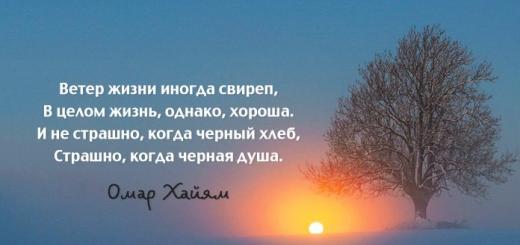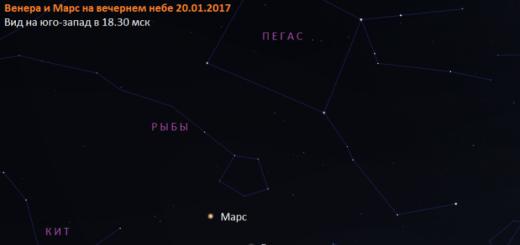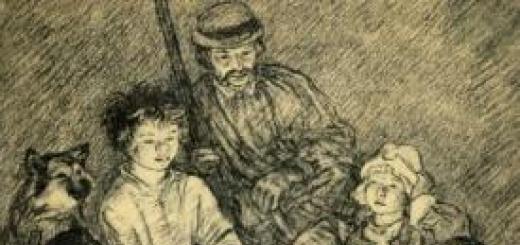Class: 8
Keywords: Atmospheric circulation , anticyclone, cyclone, transformation, atmospheric front
Goals:
- Educational: expand and deepen students’ knowledge about climate; form concepts about “atmospheric fronts”, “cyclone and anticyclone”; determine the influence of the underlying surface on the climate. (slide 2)
- Educating: show influence economic activity people on climate and its changes.
- Developmental: develop the ability to systematize, analyze, compare, draw conclusions; contribute to the formation of communicative and information competences of students.
Equipment: physical map Russia, help cards, atlas, collection of questions and assignments on geography, textbook, mountain model, projector.
Lesson type: learning new material.
Technologies used: dialogue-communicative, formation of techniques educational activities and the project method.
Shapes: game, individual, group.
Methods: research, educational, practical.
Lesson progress
The class is divided into five teams. Each team has a commander. He fills out the evaluation sheet, notes the answers of each speaking team member. At the end of the journey, each participant is scored.
Team score sheet.
| F.I. | 1 height | 2 height | 3 height | 4 height | 5 height | 6 height | 7 height | 8 height | Final grade |
Teacher: Guys, today we have an unusual lesson, you and I will climb to the top of the mountain. To do this, first we will do a warm-up. Let's check how you have mastered the previous material. On the table you have cards, each with two questions, answering which will allow you to rise to a height of 2000 m.
To climb to the following heights you need to answer the questions: (slide 3)
1.What is weather? Name the weather elements.
2.What is climate? Why is knowledge about climate necessary?
3. Decipher the symbols on the diagram (Collection of questions and tasks on geography p. 17).
4. The emission of heat and light by the sun is:
5. Unit of measurement of solar radiation (kcal? cm2)
6. What is total radiation?
Teacher: In order to continue our further journey, we need to make a stop. The weather is often unpredictable and we need to study the atmospheric processes that we may encounter during our journey (The teacher then proceeds to explain the new material).
Open your travel notebook to write down new concepts. To begin with, I ask you to answer the questions: (slide 4, 5, 6)
1. What are air masses? When air masses move over the earth's surface, what happens? (they tolerate heat and moisture)
2.What air masses influence the climate of Russia?
3. What reasons cause the movement of air masses? (pressure difference, uneven heating earth's surface.)
4. According to the difference in the properties of air masses, they are divided into: marine and continental.
What properties do these air masses have?
(Marine air masses are humid and bring precipitation. Continental air masses are dry and bring drought in the summer and clear and frosty weather in the winter.)
5. What is atmospheric circulation? (slide 7)
Atmospheric circulation is the movement of air masses of various origins. (Students write down the definition in their notebook)
Teacher: (slide 8)
Our country lies in temperate and polar latitudes, and most of the territory of Russia lies in temperate latitudes. In temperate latitudes, westerly transport (westerly winds) prevails, Atlantic Ocean has a significantly greater influence on the climate compared to the Pacific Ocean.
Let's open the atlas and try to determine why the Pacific Ocean has the least impact?
Since in the eastern part of our country there are mountains that trap air masses from Pacific Ocean.
In winter, a large area plays a major role high pressure, called the Asian maximum, the center of which is located in the regions of Transbaikalia and Northern Mongolia. From it, areas of high pressure spread northeast to the Chukotka Peninsula, in Eastern Siberia, to the west through Kazakhstan and to the south of the Russian Plain to 50?N. The weather in summer is clear, quite warm, and in winter it is clear and frosty.
Also, the formation of the country's climate is influenced by the Icelandic and Aleutian minimums (PH), the Azores and Arctic maximums (Pv) (then the teacher talks about their influence on the weather).
Great influence The underlying surface influences climate formation. For example, Arctic air masses, passing through the Russian Plain, warm up so much that the weather remains clear and dry for a long time.
What happened to the air mass?
She changed her properties. (slide 9)
Transformation is a change in the properties of air masses under the influence of the underlying surface.
Why can arctic air masses, penetrating far to the south of the Russian Plain, cause frosts in spring and cold snaps in winter?
The terrain has an effect.
Atmospheric fronts influence climate formation. (slide 10)
Atmospheric front - transition zones between air masses (see textbook Art. 58)
Arctic front - occurs between arctic and temperate air masses.
Polar front - occurs between temperate and tropical air masses.
The width of the front usually reaches several tens of kilometers. In the frontal zone, when two different air masses come into contact, there is a rapid change in pressure, temperature, humidity, strong winds blow, and precipitation occurs.
Two students were given a forward task to prepare a message about a warm and cold front (students present the messages at the board). (slide 11-12)
Climate formation is influenced by atmospheric vortices: cyclone and anticyclone. (The background summary is drawn up as the teacher explains on the board). (slide 13-16)
Students present a progress report at the board short term project
Atmospheric circulation(summarizing repetition lesson)
Purpose: To summarize and systematizeknowledge on the topic “Atmosphere”.
Lesson objectives: educational: - in identify cause-and-effect relationships between atmosphericphenomena of the Earth.
Continue to develop skills and abilities: analyze cartographic materials, work on general educational skills to compare and generalize, listen to comrades.
developing: - develop cognitive interest to questions of geography, independent thinking.
educational: - V develop a sustained interest in the subject.
Equipment: cards: climate of the world, climate zones andareas of the world, political, physical map m And ra, atlases, textbooks.
Lesson type: generalizing repetition
Form : frontal conversation
Method: explanatory and illustrative, problem-based presentation, reproductive, partly exploratory.
Lesson progress:
I Organizational moment.
Communicate lesson objectives.
II Main part.
We know that the air is heated by the Earth, and for what reasons?depends on the heating of the earth's surface itself? (from the angle of incidencesun rays).
Make a drawing and show these different lighting angles on different latitudes.
What is the average air temperature in January and in July, which observed on the east coast of Australia; in southern Africa;In the south North America. How will we proceed?
What is the name of the line connecting points with the same temperature? (isotherm).
Name the absolute air temperature records markedin northern Africa, in southern South America, in Antarctica. Explain what they mean.
So, the heating of the earth's surface, and, consequently, the air temperature above it depends on the height of the sun and the different angle of incidencesun rays. But at the same time the air temperature is at the sameThe same latitude varies. Why? (different underlying surface)
Working with the textbook p.35. Let's remember what it isair mass?
What air masses form over Europe?
Why does the UVM properties change??
Write a new word in your notebook - transformation and what it means.
Explain how precipitation changes along 30 S. Australia and indicate in which climate zones it is located.
Using the climatogram of the cities of Manaus and Iquitos on page 184
What are the typical signs of an equatorial climate, in which countries are they found?
Using the climatogram of the city of Antofagasta, nametypical signs of a tropical climate, in which country is it located?
What is the reason for the monotony of the climate of the mainclimate zones?(one air mass)
The Amazon is the deepest river in the world. How do you explain this?
The Sahara is the greatest desert in the world. How can you explain this peculiarity?
Which ocean, the Atlantic or the Pacific, has a greater influence on the climate of the northern part of South America?; temperate latitudes of Eurasia? Explain your point of view.
Look carefully at your notes on the topic andname the cause-and-effect relationships between atmospheric phenomena Have we looked at the lands?
1.angle of incidence of sunlight - heating of the earth's surface
2. underlying surface - temperature
3.temperature - pressure
4.pressure - precipitation
5.pressure - wind.
III. Summing up the lesson
IV. Homework: Lesson 12
Subject
"Atmospheric circulation"
Target: To form an idea of the features of atmospheric circulation in Russia.
Tasks:
1. Familiarization of students with the peculiarities of atmospheric circulation in Russia;
2. Formation of universal educational actions using development technology techniques critical thinking;
3. Disclosure of the significance of atmospheric circulation in nature and human life
Equipment: multimedia equipment, atlases, textbook (Grade 8 Geography – Polar Star)
Lesson type : combined
Lesson stage
Teacher activities
Student activity
Organizational moment
Kind
Good afternoon guys! Today we have a slightly unusual lesson. Geography teachers from other schools in the area came to visit us. I want to wish us all success and successful work.
Creates an emotional mood
Listen to the teacher, tune in to the lesson
II .Homework survey
In the last lesson we studied the topic “Solar radiation”. Now we will check how you have mastered this topic.
Several guys receive cards with individual tasks, the rest work with me.
What is solar radiation? (Emission of heat and light from the sun )
What do we call total solar radiation?
The difference between the receipt of total solar radiation and its losses due to reflection and thermal radiation- This……(radiation balance)
And now I offer you the POPS technique
P-position
O-rationale
P – confirmation
C-consequence
Position : « The total solar radiation in the south of Russia is greater than in the north"
You need to either prove or disprove this position
Now let's see what you got.
Guys! Here is a short list of statements. You need to divide them into three groups:
Never
Sometimes
Always
1.The greater the latitude of the area, the lower the sun rises
above the horizon (Always )
2. Radiation balance depends on the underlying surface
( Always )
3.Admission solar energy in high latitudes more
than at the equator (Sometimes - only in summer, when at the pole
polar day)
4. The lower the latitude of the area, the greater the differences between winter and summer (never – at the equator there are practically no differences between winter and summer)
5. On a cloudy day you can get a good tan (never )
Guys! You have mastered it well this topic, let's think about where
Could this knowledge be useful to you?
1. Distributes cards for individual work for weak students
(differentiated approach);
2.Front survey for the class,
checking the mastery of the material covered.
3.Creates conditions for children’s creative activity, monitors the completion of tasks according to the POPS formula.
Listens and comments on student responses and ensures a positive reaction to classmates’ creativity.
Formulates a task, teaches analysis.
Listens and comments on student responses
Formulates a question, develops students’ logical thinking
cards (Test)
Answer to teacher questions,
carry out self-test
mastering the material
Complete the proposed task, develop logical thinking.
Read out their answers to the task.
Do the work: distribute the proposed statements into 3 groups, learn to analyze.
Read and explain their answers to the task, justify their choice of writing
Answer the teacher's question
III .Learning new material
Call stage
In nature, various movements or movements constantly occur. Give examples of such movements
(ocean currents, water cycle in nature, river flow, movement of lithospheric plates). In the process of all movements, some consequences arise (which?)
Today in class we will talk about the circulation of air masses
Open your notebooks and write down the topic of the lesson."Atmospheric circulation"
Guys, what associations does this phrase evoke for you?
What do you think the lesson will be about?
Let's set the goal of our lesson
Stage 2: Understanding the content
Using the atlas maps, let's see in which climatic zones the territory of Russia is located
(arctic, subarctic, temperate).
You and I know that in every climate zone
various air masses are formed.
Let's look at the climate map, which VMs dominate the territory of Russia?
Each VM has certain properties. Let's remember what properties all the listed VMs have?
Guys, look at the physical map and tell me: Will air masses be able tocoming from the Atlantic, Pacific and Arctic oceans to penetrate into the interior of our country?
Let's conclude: what factor influences the transfer of air masses?
The transfer of VM is also influenced by the position of Russia relative to the planetary centers atmospheric pressure.
Look at the screen. Let's look at the image carefully.
We see areas of increased and low blood pressure permanent and seasonal effects affecting the transfer of VM. Analyze the drawing and write down in your notebook the areas of high and low pressure of constant and seasonal action.
IN everyday life We very often hear the phrase “atmospheric front.” Where can we hear this phrase?
It is with this term that the sharp change in VM is associated.
An atmospheric front is a contact zone of different air masses, tens of kilometers wide and hundreds of kilometers long.
The atmospheric front is a transition zone between air masses with different properties
Guys, pay attention to the slide. Here is a diagram of the formation of warm and cold fronts. Now you will work in pairs. Your task is to create a mini-story about an atmospheric front using a drawing. The first row describes a warm front, the second a cold front.
Let's check what you got.
Along atmospheric fronts, huge vortices—cyclones and anticyclones—emerge at their bends.(Cyclone - translated from Greek - rotating )
I suggest you work with the text and drawing and compare cyclones and anticyclones. We present to your attention a table and answer options.
It is necessary to correctly place words and phrases in the correct cells
Comparison elements
Cyclones
Anticyclone
Center pressure
Air movement
Air flows
Weather in summer
Weather in winter
Decreased. Frosty cloudless weather. Rising. Air movement from the center is clockwise. Increased. Air movement towards the center is counterclockwise. Descending. Cold weather and rainy cloudy weather. Cold weather, rainy cloudy weather. Thaw with precipitation in the form of snow. Dry cloudless weather without precipitation.
Now let's check your work
Guys, you have worked with the information, let’s try to formulate definitions: a cyclone is….., an anticyclone is….
Physical education lesson: I ask you to get up from your jobs. According to my command, you must depict the movement of air:
The first row is the movement of air in the cyclone;
The second row is the movement of air in the anticyclone.
Guys, let's summarize our lesson. Please answer the question: What changes in nature does the circulation of air masses lead to? How do weather changes affect humans?
Stage 3: reflection (consolidation of material)
Guys, I suggest you evaluate your knowledge gained in the lesson and play the “True-False” game. I will read out the phrases, and you answer: true or false
1. The largest part of Russia’s territory lies in the temperate climate zone (correct)
2. Changes in the properties of air masses are called circulation
(wrong)
3. The atmospheric front is a transition zone between VMs with different properties (Correct)
4. Lingering, drizzling rains are brought by a cold front
(Wrong)
5. Atmospheric vortices with low pressure in the center are cyclones
(right)
6. An anticyclone has arrived: the weather is frosty and sunny outside
(right)
Guys, you did a very good job today, you learned the material well, let’s give you grades.
Now open your diaries and write down homework
Paragraph 19, page 90. Task 8, 11,12 page 94.
Motivating children to learn new material
Formulates the topic of the lesson, updates knowledge, teaches how to formulate a cognitive goal
Formulates the task, updates the methods of activity when working with the map
Teaches how to work with a map
Formulates
question
Creates problematic situation
Leads students to a conclusion.
Informs about planetary centers of atmospheric pressure, shows a picture on a slide, and teaches analysis.
Subsumes the concept of “atmospheric front”.
Teaches how to work with text, synthesize information, and draw up a diagram.
Shows a drawing on a slide and organizes work in pairs.
Listens and corrects student answers
Reports about cyclones and anticyclones, organizes independent work with the textbook, monitors its implementation
Listens and corrects (if necessary) the students’ answer, checks the correctness of filling out the table
Understanding the concept of “cyclone”
Informs the task for the physical education lesson.
Teaches children to build a logical chain of reasoning, relying on life experience and knowledge gained in class
I create conditions for self-testing by students educational material
Focuses attention on the final results of educational activities, assigns grades for the lesson.
Reports homework, explains its completion, and marks it in the diary.
They make assumptions and express their point of view.
Formulate the purpose of the lesson:“To study the features of atmospheric circulation in Russia and find out the consequences of atmospheric circulation in nature and human life.”
Write down the topic of the lesson in your notebook.
They work with a map, determine the type of air masses, and write them down in a notebook in the form of a diagram.
Analyze the map
Answer the teacher's question
They analyze the physical map of Russia and draw a conclusion.
They draw a conclusion.
Analyze the image and write down the centers of atmospheric pressure in a notebook.
Answer the question and write down the definition in a notebook.
Analyze the text of the textbook and draw up a diagram.
Analyze the drawing and make up a story about one of the atmospheric fronts.
They talk about atmospheric fronts.
Work with text, select necessary information, fill out the table
Answer the teacher’s question, make adjustments to the work (if necessary)
Formulate the definitions of a cyclone and an anticyclone and write them down in a notebook.
Complete the task, demonstrate air movements in a cyclone and anticyclone.
Learn to make correct inferences.
Carry out a self-check.
The teachers are listening.
Write down the task in your diary.
The lesson is a journey.
Topic: Atmospheric circulation. Goals:
1.Educational: expand and deepen students’ knowledge about climate; form concepts about “atmospheric fronts”, “cyclone and anticyclone”; determine the influence of the underlying surface on the climate. (slide 2)
2.Educating: show the impact of human economic activity on climate and its changes.
3.Developing: develop the ability to systematize, analyze, compare, draw conclusions; contribute to the formation of communicative and information competences of students.
Equipment: physical map of Russia, help cards, atlas, collection of questions and assignments on geography, textbook, mountain model, projector.
Lesson type: learning new material.
Technologies used: dialogical and communicative, formation of teaching methods and project method.
Forms: game, individual, group.
Methods: research, educational, practical.
Progress of the lesson.
I. Organizational moment.
The class is divided into five teams. Each team has a commander. He fills out the evaluation sheet, notes the answers of each speaking team member. At the end of the journey, each participant is scored.
Team score sheet.
| Final grade |
|||||||||
II. Journey.
Teacher: Guys, today we have an unusual lesson, you and I will climb to the top of the mountain. To do this, first we will do a warm-up. Let's check how you have mastered the previous material. On the table you have cards, each with two questions, answering which will allow you to rise to a height of 2000 m.
To climb to the following heights you need to answer the questions: (slide 3)
1.What is weather? Name the weather elements.
2.What is climate? Why is knowledge about climate necessary?
3. Decipher the symbols on the diagram (Collection of questions and tasks on geography p. 17).
4. The emission of heat and light by the sun is...
5. Unit of measurement of solar radiation (kcal∕cm2)
6. What is total radiation?
Teacher: In order to continue our further journey, we need to make a stop. The weather is often unpredictable and we need to study the atmospheric processes that we may encounter during our journey (The teacher then proceeds to explain the new material).
Open your travel notebook to write down new concepts. To begin with, I ask you to answer the questions: (slide 4, 5, 6)
1. What are air masses? When air masses move over the earth's surface, what happens? (they tolerate heat and moisture)
2.What air masses influence the climate of Russia?
3. What reasons cause the movement of air masses? (pressure difference, uneven heating of the earth's surface.)
4. According to the difference in the properties of air masses, they are divided into: marine and continental.
What properties do these air masses have?
(Marine air masses are humid and bring precipitation. Continental air masses are dry and bring drought in the summer and clear and frosty weather in the winter.)
5. What is atmospheric circulation? (slide 7)
Atmospheric circulation- movement of air masses of various origins. (Students write down the definition in their notebook)
Teacher: (slide 8)
Our country lies in temperate and polar latitudes, and most of
The territory of Russia lies in temperate latitudes. In temperate latitudes, westerly transport (westerly winds) dominates, the Atlantic Ocean
has a significantly greater influence on the climate compared to the Pacific Ocean.
Let's open the atlas and try to determine why the Pacific Ocean has the least impact?
Students:
Since in the eastern part of our country there are mountains that trap air masses from the Pacific Ocean.
Teacher:
In winter, the main role is played by a vast area of high pressure called the Asian High, the center of which is located in the Transbaikalia and Northern Mongolia regions. It causes areas of high pressure
spread to the northeast to the Chukotka Peninsula, to Eastern Siberia, to the west through Kazakhstan and to the south of the Russian Plain to 50°N. The weather in summer is clear and quite warm, and in winter it is clear and frosty.
Also, the formation of the country's climate is influenced by the Icelandic and Aleutian minimums (PH), the Azores and Arctic maximums (Pv) (then the teacher talks about their influence on the weather).
The underlying surface has a great influence on climate formation. For example, Arctic air masses, passing through the Russian Plain, warm up so much that the weather remains clear and dry for a long time.
Teacher:
What happened to the air mass?
Students:
She changed her properties. (slide 9)
Transformation– change in the properties of air masses under the influence of the underlying surface.
Teacher:
Why can arctic air masses, penetrating far to the south of the Russian Plain, cause frosts in spring and cold snaps in winter?
Students:
The terrain has an effect.
Teacher:
Atmospheric fronts influence climate formation. (slide 10)
Atmospheric front– transition zones between air masses (see textbook Art. 58)
Arctic front– occurs between arctic and temperate air masses.
Polar Front– occurs between temperate and tropical air masses.
The width of the front usually reaches several tens of kilometers. In the frontal zone, when two different air masses come into contact, there is a rapid change in pressure, temperature, humidity, strong winds blow, and precipitation occurs.
Two students were given an advanced task to prepare a message about a warm and cold front (students tell messages at the board). (Slide 11-12)
Teacher:
Climate formation is influenced by atmospheric vortices: cyclone and anticyclone. ( Supporting notes compiled as the teacher explains on the board). (slide 13-16)
Students present a progress report at the board short term project
Lesson objectives:
To develop knowledge about the types of air masses.
Reveal the role of prevailing winds in the general circulation of the atmosphere.
Develop the ability to work with diagrams and a climate map.
Equipment:
textbook, atlas, globe, climate map of the world.
Main content:
general circulation of the atmosphere. Types of air masses and their properties. Trade winds. Western winds of temperate latitudes. Eastern (katabatic) winds of the polar regions. Monsoons.
Checking homework:
1.
What is atmospheric pressure?
2.
What is wind and how is it formed?
3.
How can we explain the uneven distribution of precipitation on the Earth's surface?
4.
What are the reasons for the formation of different atmospheric pressure belts on Earth?
5.
What is the relationship between atmospheric pressure belts and the amount of precipitation on the globe?
Learning new material:
Very often we witness changes in the weather in our area. What explains this? The main reason for such changes is the movement of air masses. Air moves due to uneven heating and cooling of the Earth's surface.
Information about the movement of air masses is of great importance. It interests not only meteorologists - specialists who study the processes occurring in the atmosphere, but also sailors, aviators, builders, as well as ground transport and healthcare workers.
Next, the teacher reveals the content of the concept of “air mass”. Large volumes of air that have more or less the same properties are called air masses. The air mass covers an area of thousands and millions of square kilometers. An air mass acquires certain properties (temperature, humidity, transparency or dust content) when it comes into contact with the underlying surface over which it lingers. Moving air masses in relation to the underlying surface are divided into warm (TW), if they move to a colder underlying surface, and cold (CW), if they move to a warmer surface.
Depending on the place of formation, four types of air masses are distinguished: equatorial, tropical, temperate latitudes, arctic (Antarctic).
Systematization of knowledge about the types of air masses is carried out by filling out Table 13. The necessary data can be obtained from the climate map and Figure 32 of the textbook.
Table 13
Air mass type |
Temperature |
Humidity |
AB |
||
VUSH |
||
TV |
||
EV |
A moving air mass under the influence of the underlying surface (highly heated, supercooled, dry, watery, mountainous, etc.) gradually changes its original properties. Students become familiar with the process of transformation of air masses on their own using the text in § 13 on p. 46 and 47 of the textbook.
How do the main types of air masses move on Earth?
In the troposphere, the predominant directions of air transport differ across geographic zones. The most stable winds - trade winds and monsoons - predominate in tropical latitudes, in temperate latitudes - westerly, in polar latitudes - eastern.
Drawing students' attention to Figure 33 of the textbook, the teacher asks the following questions: what direction do the trade winds have in the Northern and Southern Hemispheres? Why are the winds of temperate latitudes called westerly? In what region of the Earth do katabatic winds occur? Students show wind directions on a map and globe. When explaining the reason for the deviation of the winds, Figure 33 of the textbook is also used.
Summarizing the answers, we bring students to the formation of the concept of “general circulation of the atmosphere.” General atmospheric circulation - This is a system of air currents that covers the entire atmosphere and exchanges heat and moisture between individual zones of the globe.
At the end of the lesson, the teacher and the students create a logical chain:
Different angle falling sunlight Uneven distribution of heat in the atmosphere Uneven distribution of atmospheric pressure Movement of air from areas of high pressure to areas of low pressure General circulation of the atmosphere.
Homework:
1) study § 13; 2) answer the questions and complete the tasks after the paragraph.










